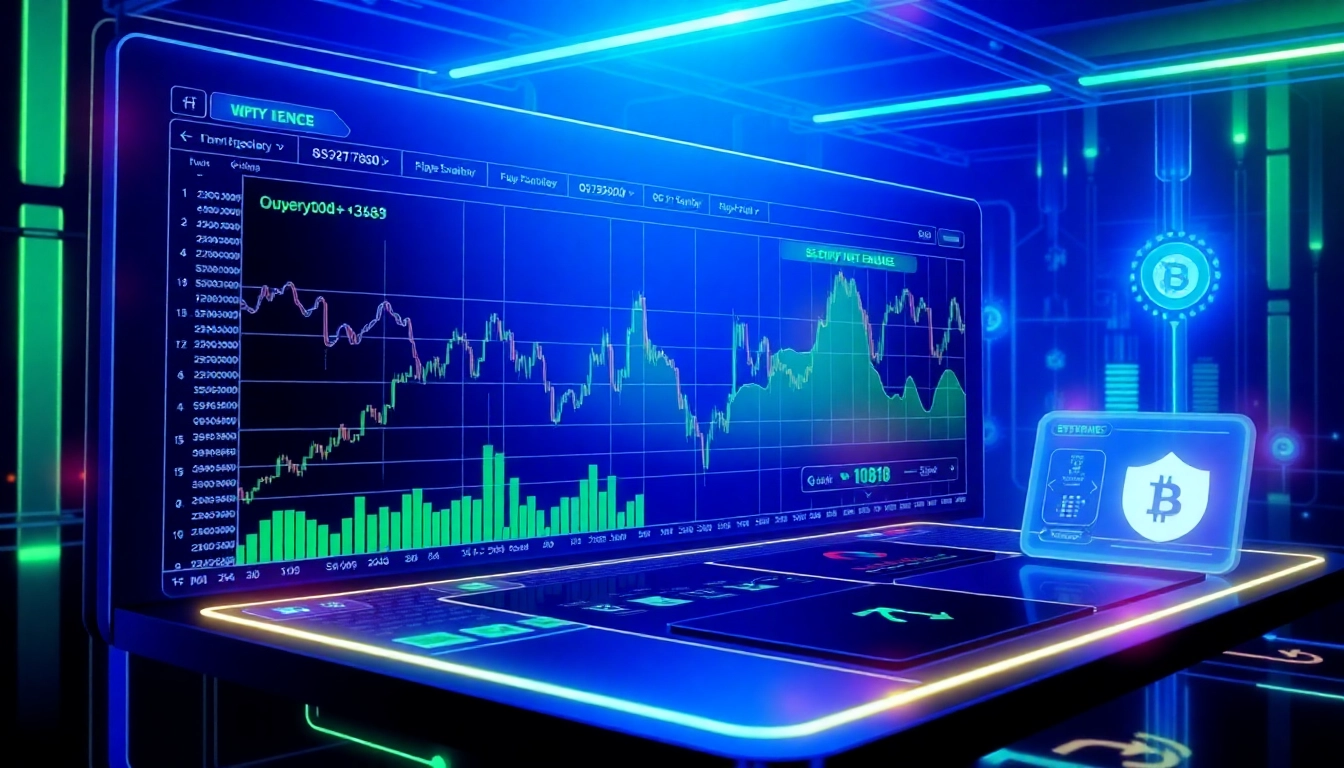Understanding Binance’s Outage and Rapid Return to Futures Trading
The cryptocurrency market operates on a delicate balance of speed, trust, and security. When a major platform like Binance experiences an outage, it sends ripples across the global trading ecosystem. Recently, Binance resumed its futures trading operations after a significant downtime that sparked discussions: was it merely a technical glitch or a calculated, strategic move? To grasp the significance of this incident, it’s essential to analyze the initial causes of the outage, its impact on traders, and Binance’s response strategies. This deeper understanding sheds light on the resilience and adaptability of crypto exchanges in a rapidly evolving industry.
For those researching crypto exchange operations, Binance’s experience offers valuable lessons in operational robustness. The outage, initially triggered by a technical glitch, quickly escalated into a broader challenge that tested the exchange’s infrastructure and crisis management capabilities. By exploring these factors, traders and investors can better prepare for future disruptions, understanding both the vulnerabilities and the strengths of leading crypto platforms.
Initial Causes of the Trading Outage and Technical Glitches
The root causes of Binance’s outage were primarily technical in nature, stemming from a system overload and procedural flaws in their risk management protocols. As blockchain and crypto markets grow exponentially, exchanges face increasing pressure to scale swiftly while maintaining security. In Binance’s case, a surge in trading volume—possibly driven by a major market event—caused server overloads, triggering system errors that cascaded into the platform experiencing downtime.
Industry insiders suggest such outages are often a combination of hardware limitations, software bugs, and security protocols misaligned with unpredictable market behavior. For instance, mismatched liquidity or inefficient load balancing mechanisms can cause system crashes during high volatility. Binance, in this instance, encountered a series of failures in its backend infrastructure that could have been mitigated by more advanced scalability solutions like horizontal scaling or cloud-native architectures.
Furthermore, mounting concerns about security might have led Binance to implement additional safeguards, inadvertently slowing down or halting operations. While protective measures are vital, their implementation must be balanced with operational continuity. Moving forward, leveraging sophisticated AI-driven monitoring tools for real-time anomaly detection can significantly reduce the risk of outages due to technical glitches.
Market Impacts and Trader Reactions During the Downtime
The outages of major exchanges significantly influence trader sentiment and market dynamics. During Binance’s downtime, traders faced consequences like missed opportunities and increased market uncertainty. The inability to execute trades, especially in a highly volatile environment, often leads to panic selling or impulsive decisions elsewhere, sometimes causing temporary price distortions.
Market reactions ranged from traders expressing frustration on social media to others seeking alternative platforms. Some traders resorted to over-the-counter (OTC) services, seeking privacy and stability, while others shifted their focus to competitor platforms like crypto exchanges that remained operational. Such shifts highlight the importance of diversification in trading platforms to safeguard against single points of failure.
Additionally, traders’ behavioral patterns during outages reveal a fundamental challenge: maintaining emotional discipline amidst market chaos. For sustainable trading, investors should adopt risk management strategies such as setting predefined stop-losses, diversifying assets, and avoiding over-leveraging, especially during unexpected platform downtimes.
Binance’s Response: Restoring Trust and Ensuring Security
In the wake of the outage, Binance’s response was closely scrutinized. Their immediate actions included issuing transparent communications, deploying technical teams to rectify the issues, and implementing measures to prevent recurrence. The platform prioritized restoring user access swiftly while ensuring that security protocols remained intact so that no breaches took place during downtime.
Binance also engaged with external cybersecurity and infrastructure experts to audit their systems, reinforcing the importance of transparency in crisis management. An effective crisis response not only involves technical fixes but also maintaining user confidence through clear, timely updates and remedial actions.
In reinforcing security, Binance launched additional multi-layered safeguards such as enhanced DDoS mitigation, regular vulnerability testing, and improved redundancy protocols. These steps serve as a blueprint for other exchanges, emphasizing that resilience depends on proactive security measures coupled with rapid incident response.
Assessing the Smart Move or Glitch? Binance’s Strategy for Crypto Exchange Resilience
Analyzing Binance’s Infrastructure and User Safeguards
Binance’s infrastructure is built on a combination of cutting-edge technology and rigorous security standards. Post-incident reviews indicate that they are investing heavily in scalable cloud solutions, high-availability systems, and automated monitoring. This architecture aims to minimize downtime and provide seamless user experiences even during periods of extreme volatility.
Effective safeguards include real-time transaction monitoring, automated rollback systems, and multi-signature wallet management. These features ensure that even if parts of the system fail, the impact on users remains minimal, and recovery is swift.
Implementing such safeguards requires continuous investment in infrastructure upgrades and employee training, emphasizing the importance of a culture of resilience and security within the organization.
Comparing Binance’s Recovery with Industry Standards in Crypto Exchange
Compared to peers like Coinbase, Kraken, and Gemini, Binance’s recovery strategy reflects industry best practices but also highlights areas for growth. Leading exchanges now focus on decentralization and cross-region redundancy to ensure uninterrupted services. For example, Coinbase’s multi-region setup allows rapid failover, reducing outage durations.
Binance’s recent experience underscores the industry trend towards integrating AI-based anomaly detection and adaptive load balancing systems, which significantly enhance resilience. Continuous scenario testing and incident simulations are also vital, allowing platforms to prepare for unforeseen disruptions.
Ultimately, resilience isn’t solely about avoiding outages but ensuring that when disruptions occur, platforms respond swiftly and transparently, restoring user trust.
The Significance of Trust and Transparency in Crypto Exchange Operations
Transparent communication during outages and security breaches profoundly impacts user retention and brand reputation. Crypto exchanges operate in a landscape rife with scams, hacks, and scandals; therefore, openness is paramount.
Binance’s proactive updates, detailed post-mortem reports, and clear roadmap for future improvements reinforce trust. This transparency signals that the platform prioritizes user security and is committed to continuous improvement—key attributes that attract institutional and retail investors alike.
In a broader sense, trust and transparency are the foundations of market stability. When users believe in the integrity of a platform, they are more likely to maintain their holdings and trade confidently, fostering long-term growth in the crypto ecosystem.
Implications for Traders and Investors in the Crypto Market
How Market Volatility Affects Trading Decisions on Crypto Exchanges
Crypto markets are inherently volatile, and outages during turbulent times can exacerbate uncertainty. Traders relying heavily on live data and execution platforms might find themselves disadvantaged, impacting their ability to react swiftly to market swings.
For instance, during Binance’s outage, traders with limited access faced increased risk of slippage, losses, or missed opportunities. Understanding timing and market signals becomes more critical, emphasizing the necessity of developing diversified trading strategies and using multiple platforms to mitigate risks.
Best Practices for Navigating Outages and Maintaining Portfolio Security
To navigate outages effectively, traders should adopt several best practices:
- Maintain accounts across multiple reputable exchanges to ensure continuous access.
- Use secure hardware wallets for long-term storage, reducing dependence on exchange infrastructure.
- Set automated alerts and stop-loss orders to manage risk even when platforms are temporarily inaccessible.
- Regularly update security measures like two-factor authentication and multi-signature authorizations.
Additionally, staying informed through official communication channels and community forums helps traders anticipate and respond to technical issues proactively.
Future Trends: Enhancing Stability and User Confidence in Crypto Platforms
The future of crypto exchanges hinges on integrating advanced technology such as decentralized architectures, AI-driven security, and real-time incident response systems. Decentralized exchanges (DEXs), for example, reduce single points of failure, enhancing resilience against outages.
Regulatory clarity and compliance are also crucial. Clear legal frameworks foster investor confidence and incentivize exchanges to invest in robust security measures. Additionally, industry collaboration on security standards and shared threat intelligence can create a safer trading environment for all participants.
Choosing the Right Crypto Exchange Amid Fluctuating Market Conditions
Key Features That Ensure Security, Speed, and Reliability
When selecting a crypto exchange, prioritize platforms that demonstrate a commitment to security and scalability. Key features include:
- Multi-layered security protocols, including cold storage and encryption
- High liquidity and fast order execution speeds
- User-friendly interfaces with advanced trading tools
- Robust customer support and ongoing system updates
Performance metrics such as uptime rates, transaction processing times, and security audit results provide quantifiable indicators of platform reliability.
Comparative Analysis of Top Crypto Exchanges for Robust Trading
Evaluating top platforms like Binance, Coinbase, Kraken, and Gemini reveals differences in their resilience strategies. Binance’s aggressive scalability investments contrast with Coinbase’s emphasis on regulatory compliance and user security. Kraken integrates multi-region failover systems, and Gemini offers institutional-grade custody solutions.
Choosing the right platform involves aligning your trading needs with these features, ensuring your assets are protected and transactions executed efficiently during market volatility.
Steps to Evaluate and Select a Crypto Exchange for Long-Term Success
Consider the following steps:
- Assess security protocols and past incident responses.
- Review the platform’s scalability and infrastructure resilience.
- Verify regulatory compliance and licensing in your jurisdiction.
- Test user interface and trading tools through demo accounts.
- Evaluate customer support quality and community reputation.
Regularly review platform updates and industry reviews to stay informed about new features and security enhancements, ensuring sustained reliability.
Future Outlook: The Evolution of Crypto Exchanges and Market Confidence
Innovations and Upgrades in Crypto Exchange Security Systems
Emerging innovations include AI-powered threat detection, biometric authentication, and decentralized security protocols. For example, advancements in quantum-resistant encryption are on the horizon, promising enhanced security against future cyber threats.
Companies investing in these technologies demonstrate commitment to safeguarding user assets, which in turn boosts market trust and confidence.
Regulatory Developments and Their Impact on Crypto Trading Platforms
Global regulators are increasingly contributing to a structured environment for crypto trading. Legislation around AML (Anti-Money Laundering), KYC (Know Your Customer), and licensing requirements foster transparency and security.
Platforms adapting swiftly to these changes will likely outperform less compliant competitors, reducing risks of outages and scams, and enhancing overall trustworthiness in the industry.
Strategies for Traders to Stay Ahead in a Competitive and Dynamic Market
Staying ahead requires continuous learning, diversification, and leveraging technological innovations. Traders should incorporate AI-driven analytics, monitor industry news, and participate in community discussions to adapt their strategies effectively.
Long-term success depends on embracing change and ensuring that their trading ecosystem—from exchanges to wallets—is resilient and aligned with industry best practices.







